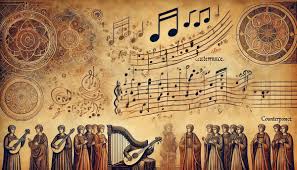Discover how Indian composers craft suspenseful music using unique scales, instrumentation, and rhythm. Explore the psychological impact and key techniques behind these thrilling soundscapes.
Music plays a pivotal role in shaping emotions, and in the world of cinema, it becomes an essential tool for building suspense. Indian composers, known for their versatility and innovation, have mastered the art of evoking anxiety and tension through their musical compositions. From Bollywood thrillers to regional cinema, Indian music directors employ various techniques to create an immersive experience that keeps audiences on edge.
This article explores how Indian composers craft suspense through music, the techniques they use, and why their approach is unique compared to Western thrillers.
The Psychological Impact of Suspenseful Music
Suspense in music is created by manipulating listeners’ expectations. Composers use specific elements to trigger psychological responses such as unease, anticipation, and fear. Key aspects include:
- Dissonance: Harsh or clashing sounds that create tension.
- Unresolved Melodies: Leaving musical phrases incomplete to build suspense.
- Unexpected Rhythms: Sudden tempo changes or offbeat patterns to surprise the audience.
- Instrumentation: The use of eerie or unconventional instruments to create an unsettling atmosphere.
Indian composers incorporate these elements uniquely, blending classical Indian ragas, electronic synthesis, and folk instruments to craft music that intensifies suspenseful scenes.
The Role of Indian Classical Music in Suspense Composition
Indian classical music provides a vast range of tools for composers to create tension. Several ragas (melodic frameworks) are commonly used in suspenseful compositions:
1. Raga Bhairavi
- Often associated with darkness and mystery.
- Used in horror and psychological thrillers to evoke unease.
2. Raga Darbari Kanada
- Known for its deep, serious tones.
- Creates a sense of foreboding and tension.
3. Raga Charukeshi
- Frequently used to convey sadness and eeriness.
- Works well in crime and thriller scores.
Composers expertly weave these ragas into film scores to enhance the dramatic effect of suspenseful sequences.
Techniques Used by Indian Composers to Create Suspense
Indian film composers employ a variety of techniques to generate tension:
1. Microtonal Variations (Shrutis)
Indian classical music allows for microtonal shifts between notes, unlike the rigid 12-tone system in Western music. This adds a layer of unpredictability, making compositions more unsettling.
2. Layering and Droning Sounds
Drones (sustained notes) are commonly used to build tension. The tanpura, a traditional Indian instrument, provides a constant background hum that creates an uneasy atmosphere.
3. Percussion-Driven Suspense
Indian percussion instruments such as tabla, mridangam, and dhol are used to create erratic, fast-paced rhythms that heighten anxiety. Sudden increases in tempo, known as tihai, add to the unpredictability.
4. Use of Folk Instruments
Unique Indian instruments such as sarangi (bowed string instrument) and shehnai (oboe-like instrument) contribute to eerie and melancholic tones, perfect for psychological thrillers.
5. Electronic Fusion and Synthesizers
Modern Indian composers blend traditional elements with synthesizers, eerie soundscapes, and electronic beats to create a more immersive experience.
Iconic Suspense Scores in Indian Cinema
Several Indian composers have mastered suspenseful scoring in films. Here are some notable examples:
1. R.D. Burman – “Gumnaam” (1965)
- The eerie whistling theme of Gumnaam remains one of the most recognizable suspense tracks in Indian cinema.
2. Ilaiyaraaja – “Sigappu Rojakkal” (1978)
- This Tamil thriller used offbeat rhythms and unsettling string sections to build psychological tension.
3. A.R. Rahman – “Ratchagan” (1997)
- Rahman’s use of synthesizers and haunting melodies in thriller films showcases his expertise in building suspense.
4. Amit Trivedi – “Andhadhun” (2018)
- A modern thriller with a mix of jazz and eerie orchestral compositions that kept audiences engaged.
Bollywood vs. Hollywood: A Unique Approach to Suspense Music
While both Bollywood and Hollywood composers use similar principles for creating suspense, Indian music scores have distinct characteristics:
- Melodic Complexity: Indian music relies more on intricate melodic structures rather than harmonic progression.
- Cultural Influences: Bollywood suspense music often includes folk, devotional, and classical Indian influences.
- Instrumental Diversity: Indian scores feature a wide range of regional instruments not commonly found in Hollywood.
- Rhythmic Intricacy: Bollywood music often incorporates polyrhythms and unpredictable tempo shifts.
These differences make Indian suspense music uniquely rich and engaging.
Indian composers have mastered the art of suspenseful music by blending classical ragas, innovative instrumentation, and modern soundscapes. Whether through haunting melodies, unpredictable rhythms, or eerie synth effects, they create an immersive experience that heightens the tension in films. Their approach stands apart from Hollywood’s reliance on orchestral swells, showcasing India’s rich musical heritage and creativity.
As Bollywood and Indian cinema continue evolving, composers are finding new ways to intensify suspense, ensuring that audiences remain on the edge of their seats. Next time you watch an Indian thriller, pay close attention to the music—it’s the unsung hero behind every moment of anxiety.
FAQ
1. What are some common Indian ragas used in suspenseful music?
Ragas such as Bhairavi, Darbari Kanada, and Charukeshi are frequently used to evoke suspense and tension.
2. How do Indian composers use percussion to create suspense?
Indian percussion instruments like tabla and mridangam are used to create erratic rhythms and sudden tempo changes, heightening tension.
3. How does Bollywood’s suspense music differ from Hollywood’s?
Bollywood scores rely more on intricate melodies, cultural influences, and diverse instrumentation, while Hollywood often emphasizes harmonic progressions and orchestral techniques.
4. What instruments are commonly used in Indian thriller film scores?
Instruments such as the sarangi, shehnai, tanpura, and synthesizers are often used to create eerie and unsettling soundscapes.
5. Which Indian composer is known for suspenseful film scores?
R.D. Burman, Ilaiyaraaja, A.R. Rahman, and Amit Trivedi are some of the most renowned composers for suspenseful film music in Indian cinema.
